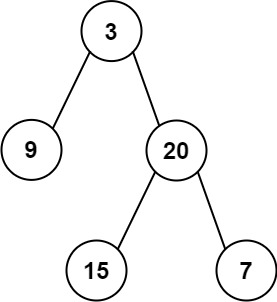Given two integer arrays inorder and postorder where inorder is the inorder traversal of a binary tree and postorder is the postorder traversal of the same tree, construct and return the binary tree.
Example 1:

Input: inorder = [9,3,15,20,7], postorder = [9,15,7,20,3] Output: [3,9,20,null,null,15,7]
Example 2:
Input: inorder = [-1], postorder = [-1] Output: [-1]
Constraints:
1 <= inorder.length <= 3000postorder.length == inorder.length-3000 <= inorder[i], postorder[i] <= 3000inorderandpostorderconsist of unique values.- Each value of
postorderalso appears ininorder. inorderis guaranteed to be the inorder traversal of the tree.postorderis guaranteed to be the postorder traversal of the tree.
My Solution:
# Definition for a binary tree node. # class TreeNode: # def __init__(self, val=0, left=None, right=None): # self.val = val # self.left = left # self.right = right class Solution: def buildTree(self, inorder: List[int], postorder: List[int]) -> Optional[TreeNode]: if not inorder or not postorder: return None root_val = postorder[-1] root = TreeNode(root_val) if len(inorder) == 1: return root root_idx = inorder.index(root_val) root.left = self.buildTree(inorder[:root_idx], postorder[:root_idx]) root.right = self.buildTree(inorder[root_idx + 1:], postorder[root_idx:-1]) return root





 浙公网安备 33010602011771号
浙公网安备 33010602011771号